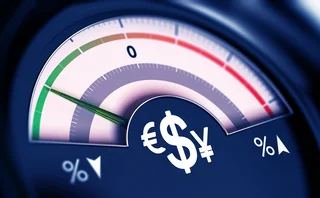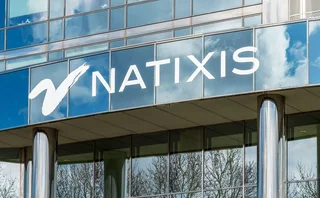
Deutsche Bank reveals role in 9/11 liquidity facility
Michael Reuther, global head of funding at Deutsche Bank, has revealed today how the European Central Bank and the Federal Reserve Bank of New York created an emergency €50 billion ‘synthetic’ liquidity facility in the wake of last year’s World Trade Center attacks.
US dollars were effectively locked into the US clearing system, and the foreign exchange markets were also short of US dollars for the same reason. Deutsche Bank’s idea, which was also backed by large French banks including BNP Paribas, was to allow euros deposited with European central banks to be withdrawn in US dollars at the prevailing exchange rate by US customers of the European banks that were short of liquidity.
Banks significantly tapped the facility while it operated on Thursday, September 13, and Friday, September 14 and were charged a spread by the European Central Bank, with withdrawals charged at the Federal funds rate.
Only users who have a paid subscription or are part of a corporate subscription are able to print or copy content.
To access these options, along with all other subscription benefits, please contact info@risk.net or view our subscription options here: http://subscriptions.risk.net/subscribe
You are currently unable to print this content. Please contact info@risk.net to find out more.
You are currently unable to copy this content. Please contact info@risk.net to find out more.
Copyright Infopro Digital Limited. All rights reserved.
As outlined in our terms and conditions, https://www.infopro-digital.com/terms-and-conditions/subscriptions/ (point 2.4), printing is limited to a single copy.
If you would like to purchase additional rights please email info@risk.net
Copyright Infopro Digital Limited. All rights reserved.
You may share this content using our article tools. As outlined in our terms and conditions, https://www.infopro-digital.com/terms-and-conditions/subscriptions/ (clause 2.4), an Authorised User may only make one copy of the materials for their own personal use. You must also comply with the restrictions in clause 2.5.
If you would like to purchase additional rights please email info@risk.net
More on Foreign exchange
LCH expects to boost deliverable FX clearing with new adds
Onboarding of dealers and link-up with CLS could swell interbank deliverable FX clearing volumes
Does no-hedge strategy stack up for mag seven mavericks?
At Amazon, Meta and Tesla, the lack of FX hedging might raise eyebrows, but isn’t necessarily a losing technique
Amazon, Meta and Tesla reject FX hedging
Risk.net study shows tech giants don’t hedge day-to-day exposures
Intraday FX swaps could signal new dawn for liquidity management
Seedling market could help banks pre-fund payments in near-real time and reduce HQLA requirements
Natixis turns on the taps in flow trading
French bank boosts flow business, balancing structured solutions capabilities
Stemming the tide of rising FX settlement risk
As the trading of emerging markets currencies gathers pace and broader uncertainty sweeps across financial markets, CLS is exploring alternative services designed to mitigate settlement risk for the FX market
Power-reverse to the future: falling yen revs up PRDCs again
Pressure on Japanese unit sparks revival in power-reverse dual currency notes
Credit Suisse and Commerz latest banks to ditch hold times
Mizuho also confirms zero last look add-on but MUFG’s policy unclear on the controversial FX practice







